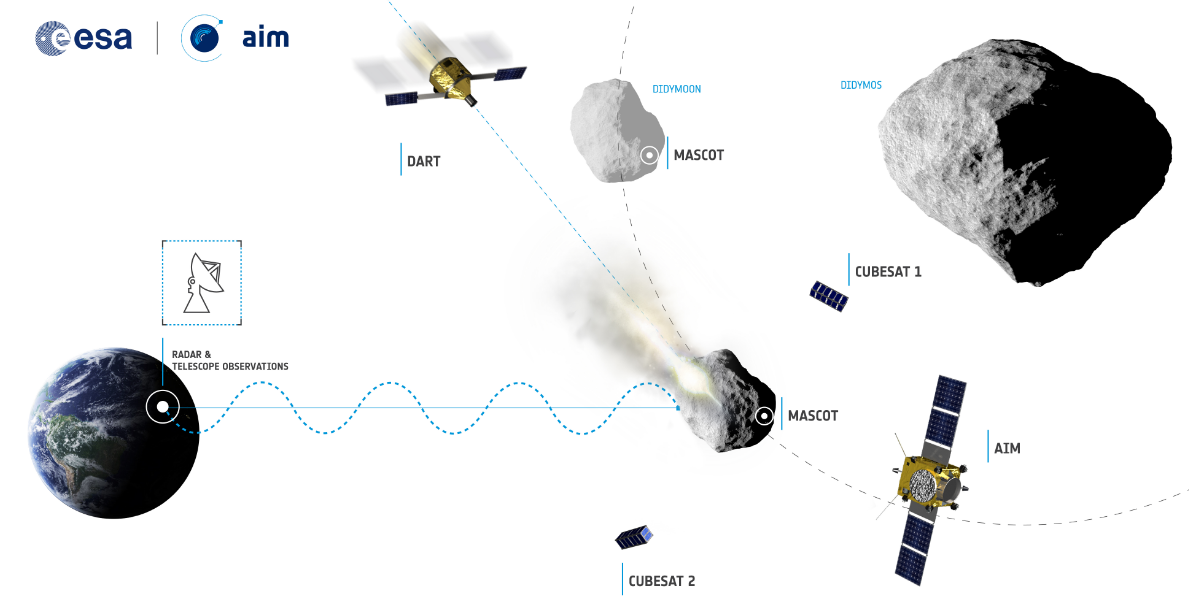International Group Preparing Test Mission To Attempt To Deflect An Asteroid
There are many asteroids that cross the orbit of the Earth. Occasionally, one passes near the Earth. If a large asteroid hits the Earth, the consequences could be catastrophic. There have been a lot of discussions and debates about what could be done if astronomers detect an asteroid on a collision course with the Earth. Unlike such natural disasters as volcanoes, hurricanes and earthquake, an asteroid strike is something that the human race might be able to do something about. However, if we are to have any chance, we must make preparations now and test various approaches to deflecting an asteroid.
An international group European Space Agency (ESA), the German Aerospace Center(DLR), Observatoire de la Côte d'Azur (OCA), NASA, and Johns Hopkins University Applied Physics Laboratory (JHU/APL) has been working on a dry-run to rendezvous with an incoming asteroid and deflect its course. The overall project is called Asteroid Impact & Deflection Assessment. The U.S. part of the project called Double Asteroid Redirection Test (DART). The plan is to send a spacecraft to a distant asteroid named Didymos. It would smash into a tiny moon called Didymoon that orbits the asteroid and alter its trajectory if successful. The U.S. part has reached phase B which means that the plan has been approved but now it must be funded.
The European part of the project is called the Asteroid Impact Mission (AIM). It consists of sending a small spacecraft to the rendezvous site in order to survey the impact and the reaction of the tiny moon. The ministers in charge of funding AIM rejected a three hundred million dollar request last December calling their part of the mission into question.
Didymoon, the target of the test mission, is big enough to cause serious damage if it hit the Earth. It is about five hundred feet wide. It would hit with an impact force equal to four hundred megatons of TNT. This is about a hundred times the force of the average nuclear warhead in the U.S. arsenal.
Recently, the European scientists working on AIM have suggested altering the design of AIM to reduce the cost of the mission. They suggest reducing the size of and simplifying the complexity of the observational spacecraft that they will send to the watch the impact. This would cost about one hundred and fifty million dollars or about half of the cost of the recent funding request. There could also be a delay if the project design is altered. It would be best if both parts of the project happened at the same time but that is not absolutely necessary. One of the goals of the observation mission is to measure the mass of Didymoon. This could be done well after DART which is scheduled for 2022.
The head of European Space Agency (ESA) told a reporter that they will put forward a new proposal at the next ministerial meeting in 2019. He also said "It is important for humanity, as a species we have the means today to deflect an asteroid. We know it will happen, one day sooner or later. It's not a question of if, but when. We have never tested asteroid deflection and there is no way we can test in (the) laboratory. We need to know if our models are correct, (whether) our simulations work as expected."
